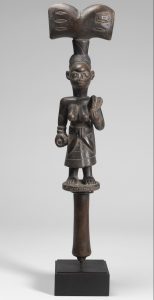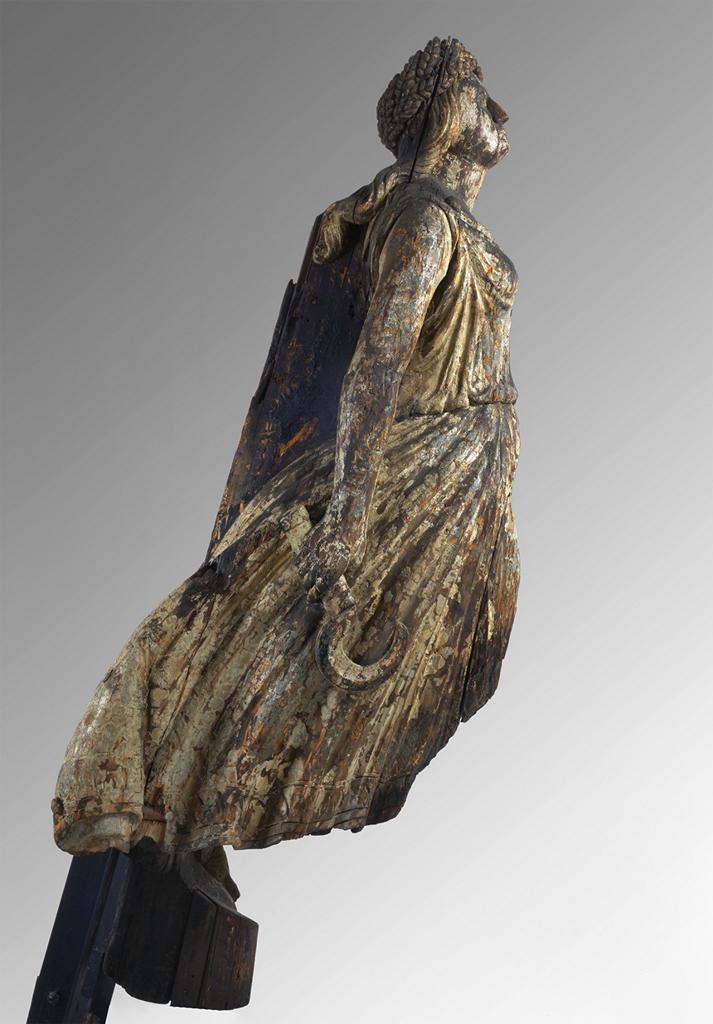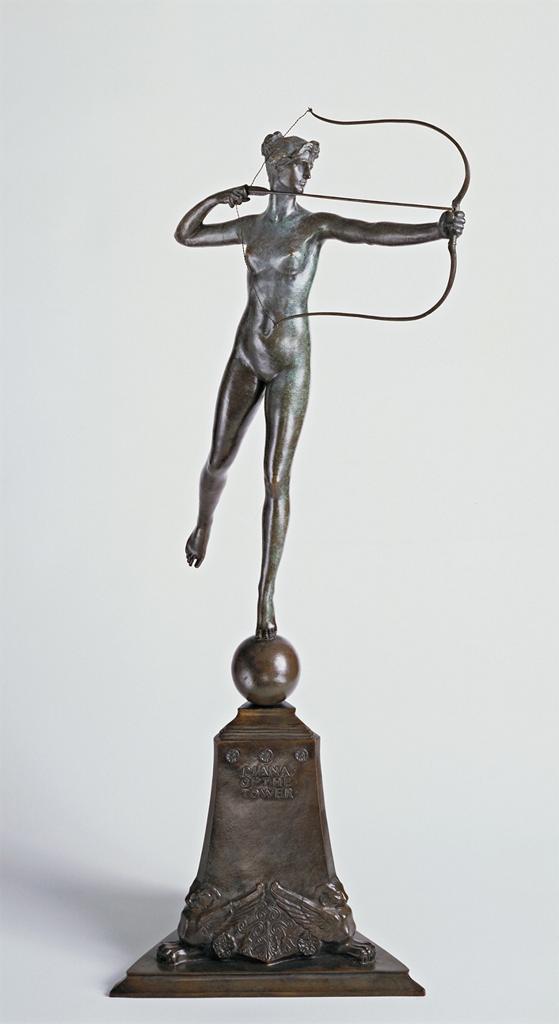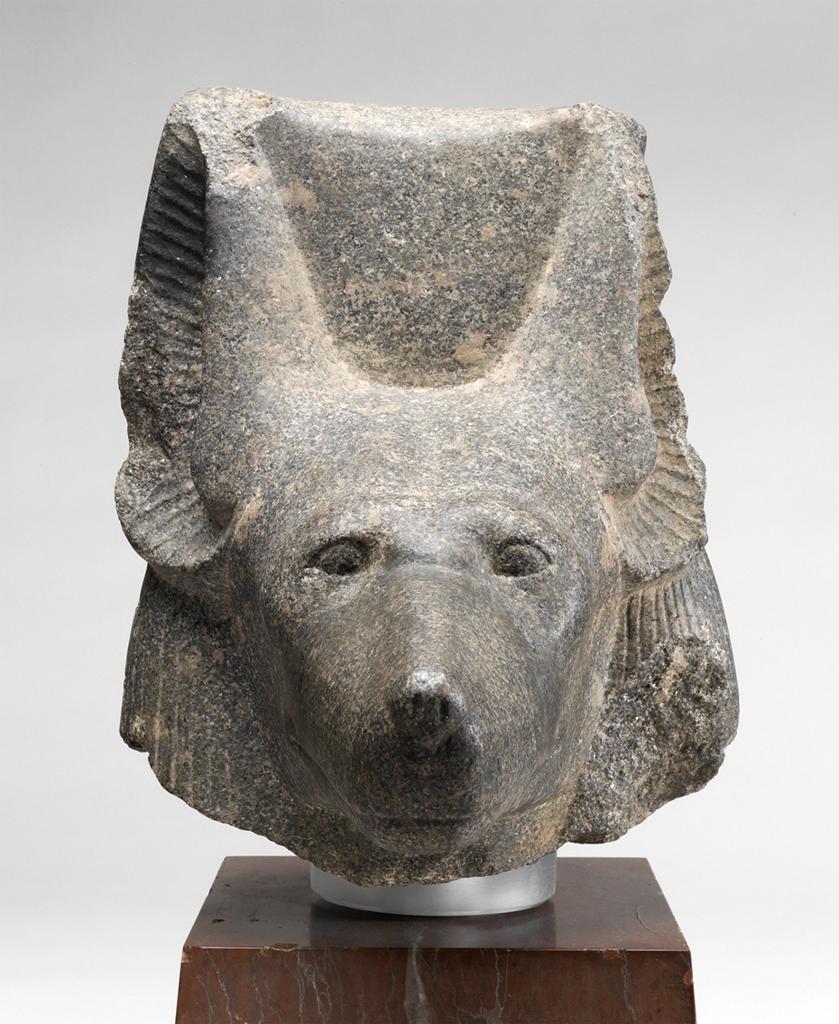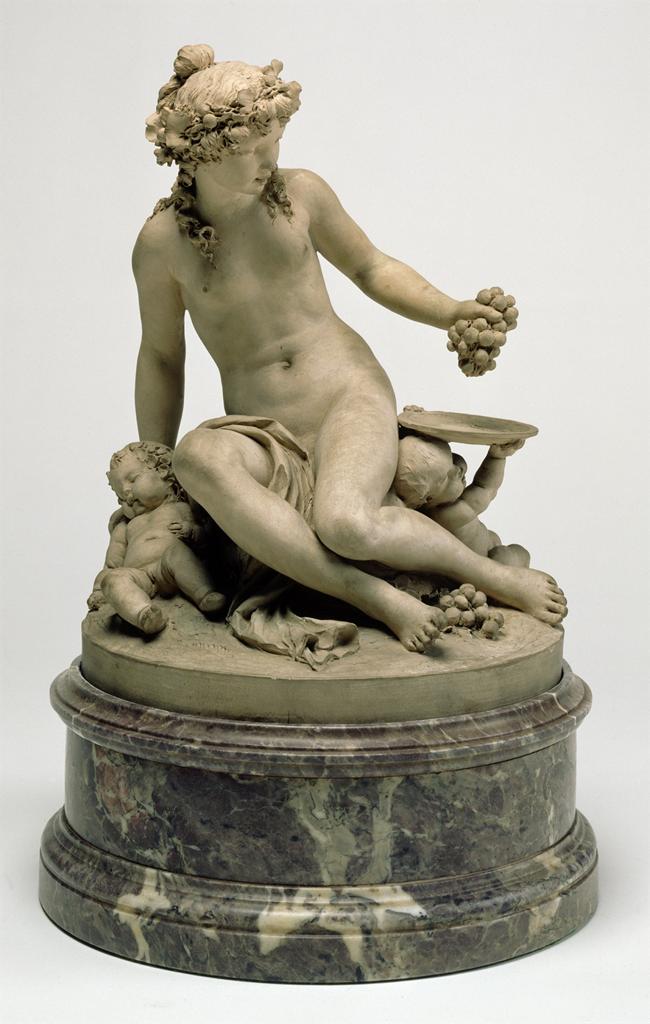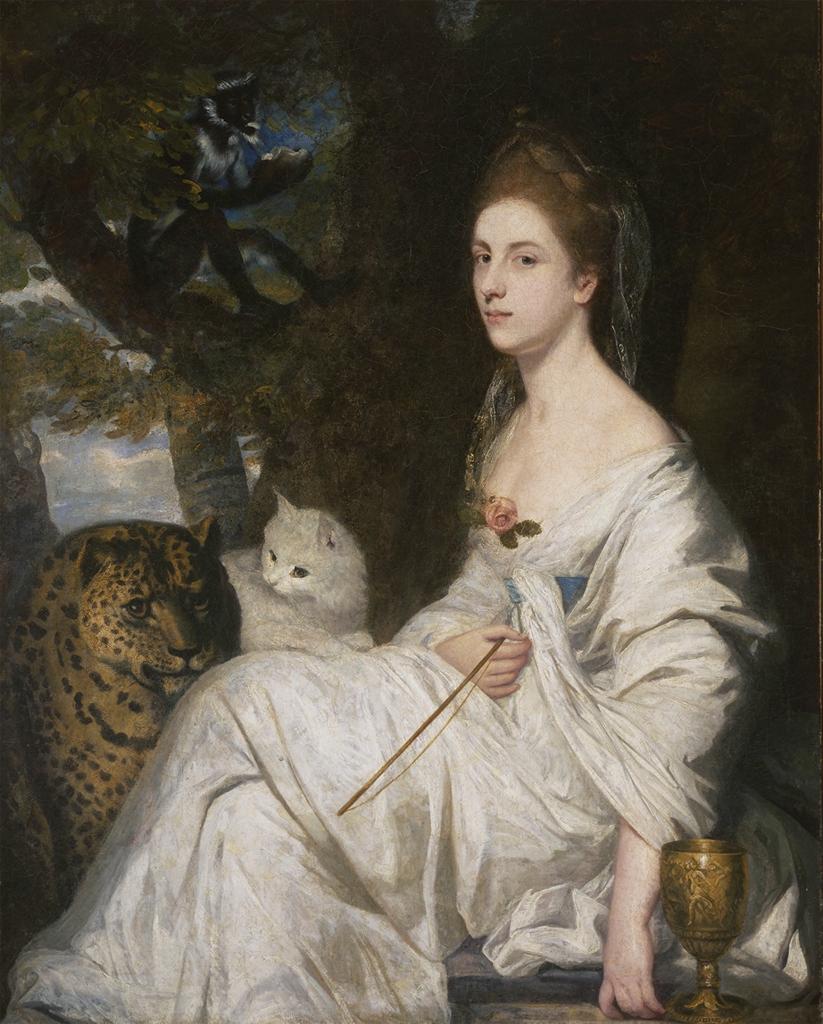Below are the objects included in the Scavenger Hunt and the object text given throughout the Hunt. Scroll below to see the bibliography for the object text.
| Shetani with Three Heads
Artists make Shetani sculptures to show what they think the Shetani spirits look like. Shetani are mischievous and sometimes dangerous spirits in East African mythology. Does this sculpture look like how you would imagine a mischievous spirit would look? |
Dance Staff for Shango
Shango is a demigod, or half-god, from the Yoruba tradition. Yoruba can be traced back to the current country of Nigeria. When honoring or summoning Shango, priests would dance while holding a double-headed axe. This one has a woman with a double-headed axe on her head. What kind of dance would you do to honor a demigod? |
| Ceres
Ceres was directly involved in the lives of humans. As the Roman goddess of agriculture and harvest, she controlled the growing crops and made sure people had enough to eat. Our word in English, “cereal,” comes from her name. What imagery do you see that tells you that this is a statue of Ceres? |
Diana of the Tower
Always on the move, Diana is the Roman goddess of wild animals and hunting. She also later became the goddess of the moon, like her Greek counterpart, Artemis. This sculpture is a smaller copy of one that stood on top of a building in New York City. Where would you put a sculpture of Diana? |
| Jackal-Headed God Anubis
The Egyptian god Anubis, has a human body and a jackal head. Anubis is the god of the dead, but why does he have a jackal head? Some people think it is because jackals lived on the edges of cities near cemeteries. People who saw the jackals thought that the animals were protecting the cemeteries, like Anubis protects the dead in the myths. |
Nymph with Two Children
In Greek mythology, Nymphs come out of nature, like rivers and trees. They are also often mothers of Greek Heroes. What kind of heroes do you think these kids in the sculpture are going to grow up to be? |
| Mrs. Nesbitt as Circe
Circe is the Greek goddess of magic. She would enchant demigod (half-god, half-human) travelers when they came to her island home. Mrs. Nesbitt is painted to look like Circe because she was a spy for the British government in the 1700’s. Like Circe, she was able to enchant people into telling their secrets. Is there an animal or mythical creature that you think represents you? |
Cinerary Urn
Often, there are similar gods across many myth traditions. In Roman tradition, Jupiter is the name for the Egyptian god Ammon. Both were rulers of the gods and the world. In Greek mythology the same god is called Zeus. |
The following is a list of resources about the objects included on this Scavenger Hunt.
“Ammon (diety).” Livius. November 1, 2018. Accessed March 9, 2019 https://www.livius.org/articles/place/ammon-siwa/ammon-deity/
“Ammon.” Encyclopedia Mythica. March 3, 1997. Accessed March 9, 2019. https://pantheon.org/articles/a/ammon.html“Anubis.” Ancient Egypt. Accessed March 9, 2019. http://www.ancientegypt.co.uk/gods/explore/anubis.html
“Anubis.” Ancient Egypt Online. Accessed March 9, 2019. https://www.ancientegyptonline.co.uk/anubis.html“
Ceres, Goddess of Agriculture.” Ceres Virginia. Accessed March 10, 2019. https://www.ceresva.org/Goddess/Ceres.htm
“Circe (Kirke) – Greek Goddess of Sorcery, Sorceress of Aeaea.” Theoi Greek Mythology. Accessed March 9, 2019. https://www.theoi.com/Titan/Kirke.html
Clodion (Claude Michel), 1738 – 1814. n.d.. Nymph with Two Children. Sculpture. Place: Smith College Museum of Art, Northampton, MA, Purchased with the bequest of Frances Ryder Walker, class of 1930. https://library.artstor.org/asset/ASMITHIG_10314006746.Editors.
“Diana | Myth, Goddess & Cult.” Encyclopedia Britannica. January 17, 2019. Accessed March 10, 2019. https://www.britannica.com/topic/Diana-Roman-religion
Green, Laura “Mrs. Nesbitt as Circe by Joshua Reynolds.” Teen Audio Guide. March 18, 2018. Accessed March 9, 2019. https://sites.smith.edu/teenaudioguide/2018/03/31/mrs-nesbitt-as-circe/
Hill, J. “Anubis.” Ancient Egypt Online. Accessed March 9, 2019. https://www.ancientegyptonline.co.uk/anubis.html
Jones, Gabriel H. “Nymph.” Ancient History Encyclopedia. August 29, 2014. Accessed March 9, https://www.ancient.eu/nymph/
Reynolds, Joshua, 1723 – 1792. 1781. Mrs. Nesbitt as Circe. Painting. Place: Smith College Museum of Art, Northampton, MA, Gift of Dwight W. Morrow Jr., Anne Morrow Lindbergh, class of 1928 and Constance Morrow Morgan, class of 1935. https://library.artstor.org/asset/ASMITHIG_10313170967.
“Roman Myth, Ceres and her Daughter.” Ancient Roman Myths for Kids. Accessed March 10, 2019. https://rome.mrdonn.org/romangods/ceres.html
Saint-Gaudens, Augustus, 1848 – 1907. 1899. Diana of the Tower. Sculpture. Place: Smith College Museum of Art, Northampton, MA, Purchased with the Winthrop Hillyer Fund. https://library.artstor.org/asset/ASMITHIG_10313170872.Scranton, Laird.
“Shango | Yoruba diety.” EncyclopediaBritannica. Accessed March 9, 2019. https://www.britannica.com/topic/Shango“Shetani with Three Heads, Saidi Hanusi.” Smith College Museum of Art, Object Label. Accessed March 10, 2019.
Unknown. ca. 1825-1830. Ceres. Sculpture. Place: Smith College Museum of Art, Northampton, MA, Purchased. https://library.artstor.org/asset/ASMITHIG_10314009539.
Unknown. 1st-2nd century. Cinerary Urn. Sculpture. Place: Smith College Museum of Art, Northampton, MA, Purchased. https://library.artstor.org/asset/ASMITHIG_10314009464.Unknown. 20th Dynasty, 1100 CE.
Jackal Headed God Anubis. Sculpture. Place: Smith College Museum of Art, Northampton, MA, Gift of Mr. and Mrs. Richard Lyman (Charlotte Cabot, class of 1932). https://library.artstor.org/asset/ASMITHIG_10314010705.

